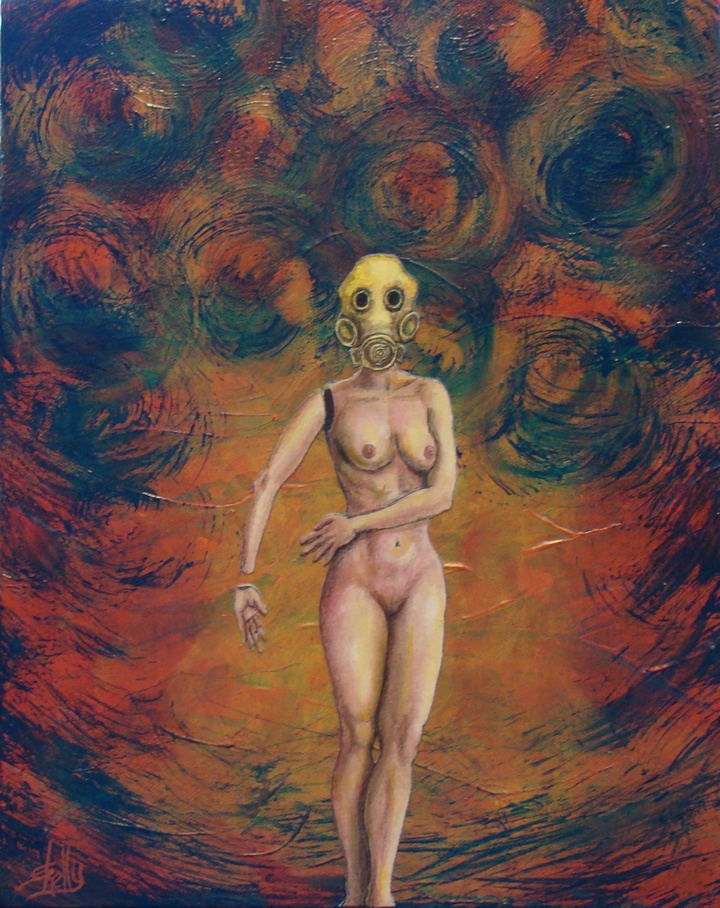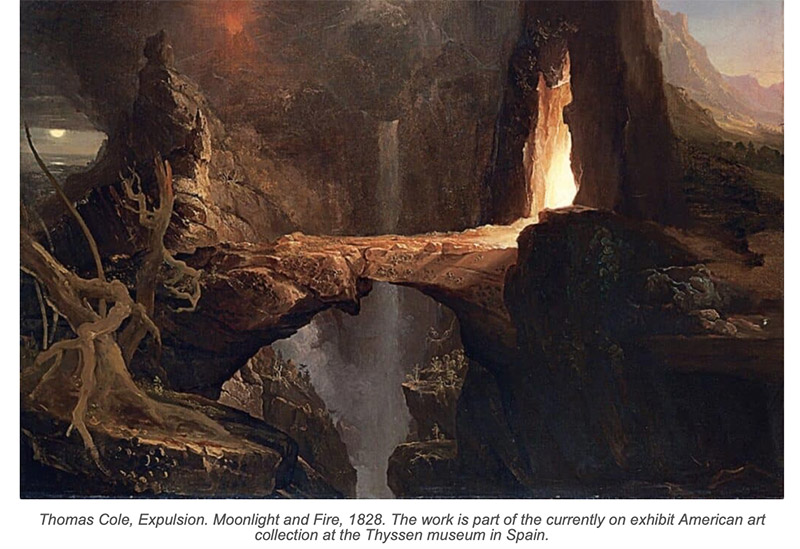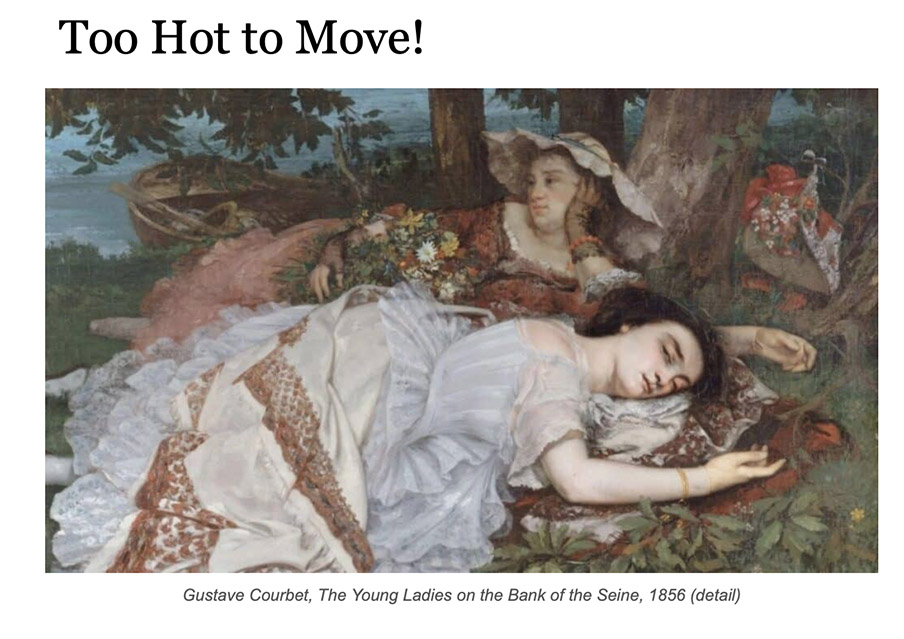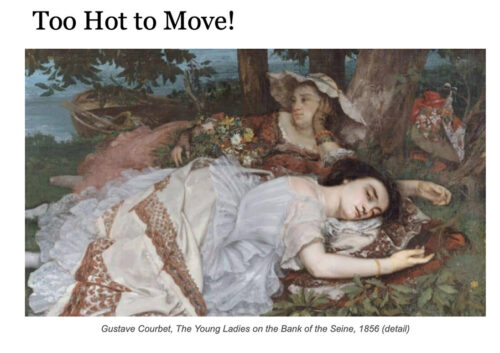Mystery and Imagination are important in my artwork and in the artwork of millions of artists. Many people think that painting from life requires you to follow exactly what you see in front of you, but there is no reason to do that. Artists with imagination (hopefully most of us) break all the rules and paint what we can dream and imagine, some of it based in reality, some of it not. My favorite artwork to look at is science-fiction based because of the enormous degree of imagination some artists have. This painting is one of mine.

Extreme realism in a painting is not terribly interesting to me. (I can’t imagine why the artist doesn’t just pick up their camera and take a photo. Why go to all that trouble painting something if you are not going to change it?) The best realism was done when it was necessary – before cameras were invented. Now, there is very little need to waste paint on capturing something exactly as it looks from life. Get a good camera and apply some filters and Voilà.

But to each artist their own thing. I do some realism myself but I mix it with imagined elements. My favorite art to do is abstract with some elements of realism. Something like 70% abstract, and up to 30% realism. (This does not go over well in juried shows where the jurors prefer all realism or all abstract, which is a lot of them). The following article is more along the lines of what I think the purpose of painting really is – embellishing and interpreting and making a statement, not being a “human camera”.
Mystery and Imagination
an article by Christopher Volpe
“Thomas Cole is the father of American landscape painting, but he was born in Britain and trained in European Romanticism. Throughout his work, Cole makes use of symbolism and the Sublime. Cole’s embrace of the sublime, a category of beauty that late 18th and early 19th century European philosophers and artists defined, ensures his work still has much to say to us today.
According to notions of the sublime, the human element is dwarfed to the point of being overwhelmed by Nature, which is seen as a vast world of violent, churning forces coldly indifferent to any human suffering Nature might cause.
For Cole, there were few things more sublime than Nature embodying God’s wrath, as he painted in his dramatic Expulsion of Adam and Eve from the Garden of Eden of 1828.
The scenery is North American; Cole saw this natural land bridge over a gorge in New Hampshire’s White Mountains in 1827 (it’s since fallen).
Traditionally, representations of the event have Adam and Eve as the focal point, with their despair conveyed through their gestures. Cole has diminished the figures to tiny, minimally detailed ones, filling the landscape itself with all the grief and terror of one of civilization’s most potent foundational myths.
Consistent with the more or less dualistic vision of good and evil espoused by many strains of Christianity, the composition is divided exactly in half. On the viewer’s right is Paradise, away from which Adam and Eve are forcibly thrust by a bright ray of divine light. Cole’s Paradise is vibrant and full of life, lush with thriving wildlife and clear blue skies. Where the pair is headed … not so much.

On the left side of the picture, Cole portrays the world after the Fall as the opposite of Paradise. It is dark and ominous, storm- and soot-choked, with the decaying trees, an angry volcano erupting in the background, and a wolf devouring a deer in the bottom left corner, snapping at a vulture trying to scavenge some of the carcass.

As amazing as the Explosion from the Garden of Eden is, even more vivid is a second painting done at the same time titled Expulsion. Moon and Firelight. Here we have the same natural bridge and symmetrical composition. But this time Cole shifts the angle and removes the figures (neither Adam or Eve are present).

He also embeds a symbolic cross shape in the center, created by the waterfall and the bridge. On the right side it is a sunlit day, on the left, a moonlit night. In this version, the divine light is not coming from Paradise; rather, it’s confined to the stone portal itself. By removing the figures, Cole leaves much to interpretation. Is this the aftermath, after Adam and Eve have crossed the bridge and are now wandering in the benighted wilderness? The painting becomes more symbolic than narrative, its realm no longer religion but the Cosmos itself.

For Cole, art’s higher purpose was to open our eyes to human potential as well as to the value and beauty of the natural world around us. As early as the 1820s Cole saw which way things were trending; he feared the effects on nature of the rapid industrialization of the United States.
In these paintings, Cole portrays the North American landscape through the metaphor of Eden and the Fall. “We are still in Eden,” he said. “The wall that shuts us out is our own ignorance and folly.”
Actually, we are not still in Eden, since only about 1% of the biosphere is still healthy thanks to human encroachment and climate change. (According to the late climate scientist James Lovelock).
But it’s summer, and I love summer. This is a hard time of the year for Plein Air painters however, because of the heat and humidity. I am lucky to not be that kind of an artist, so I take photos (instead of create them with paint) and paint my imagination in my air conditioned studio.

#Art #painting #Imagination #paintyourimagination #MysteryinArt






